At first glance, all you see is a sad little burial ground surrounded by woods—skewed, cracked, and upended headstones; plastic flowers ground into the dirt; a heap of old tires and a massive Dumpster smack in the middle. But what appears to be sad is actually miraculous. You need to know the story.
A little more than a year ago, East End Cemetery was all forest. You could drive past it down the dirt road that leads to another cemetery, Evergreen, and completely miss it. The eagle-eyed, like Erin, might spot exposed edges of headstones and memorials, tiny gray and yellow-white shapes nearly smothered in foliage. The rest of us . . .
Take a few steps out of this clearing, into the trees, and you are in a different dimension. Imagine going for a hike, a Little Red Riding Hood kind of excursion, through tall trees, into and out of a leafy ravine, and stumbling every few minutes over a grave or hunk of funerary stone peeking through the greenery and brownery. Only the whoosh of traffic on I-64, a few hundred yards to the north, prevented the full weight of spookiness from hitting me—that and the company of Erin and a few new comrades with whom I was exploring.
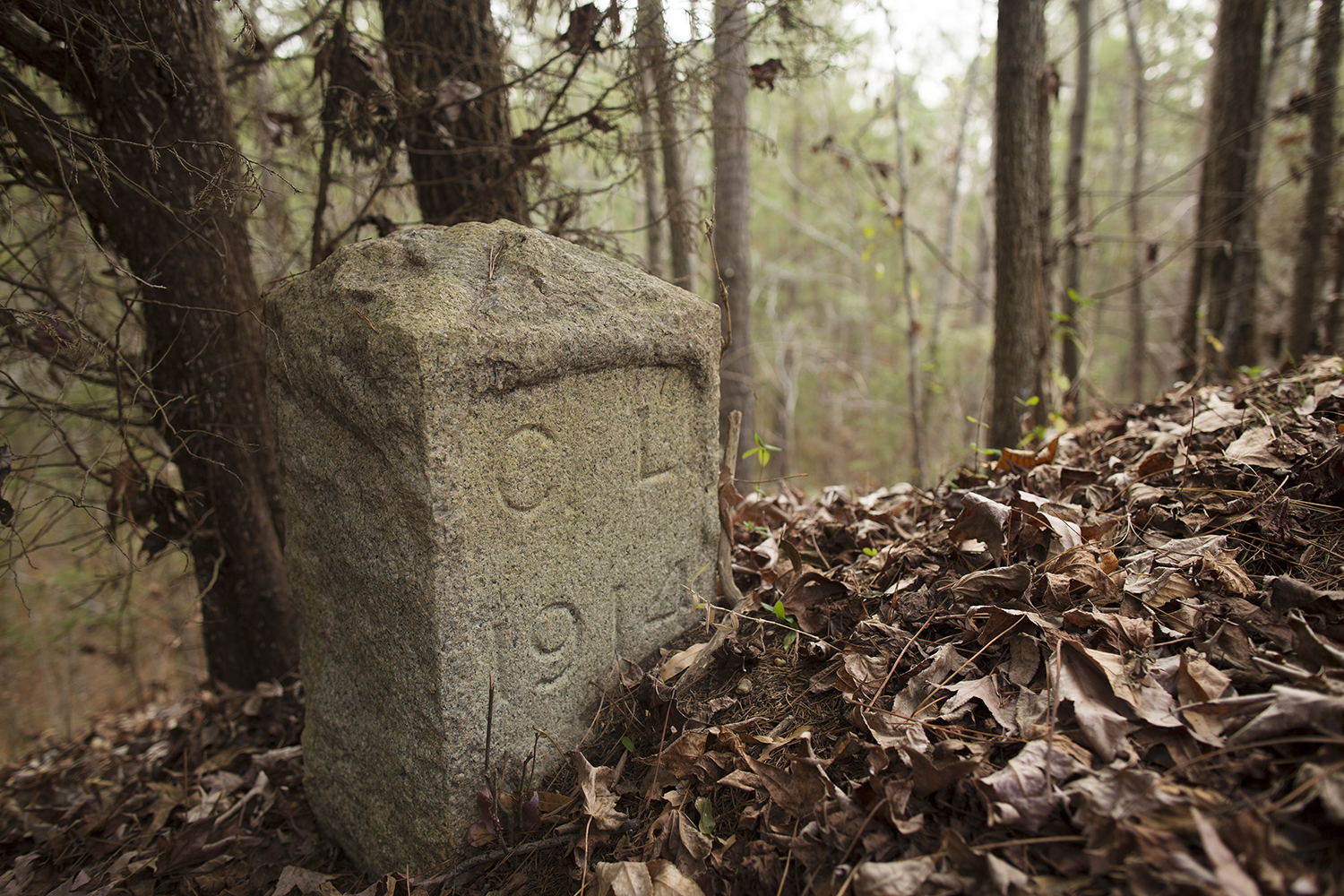
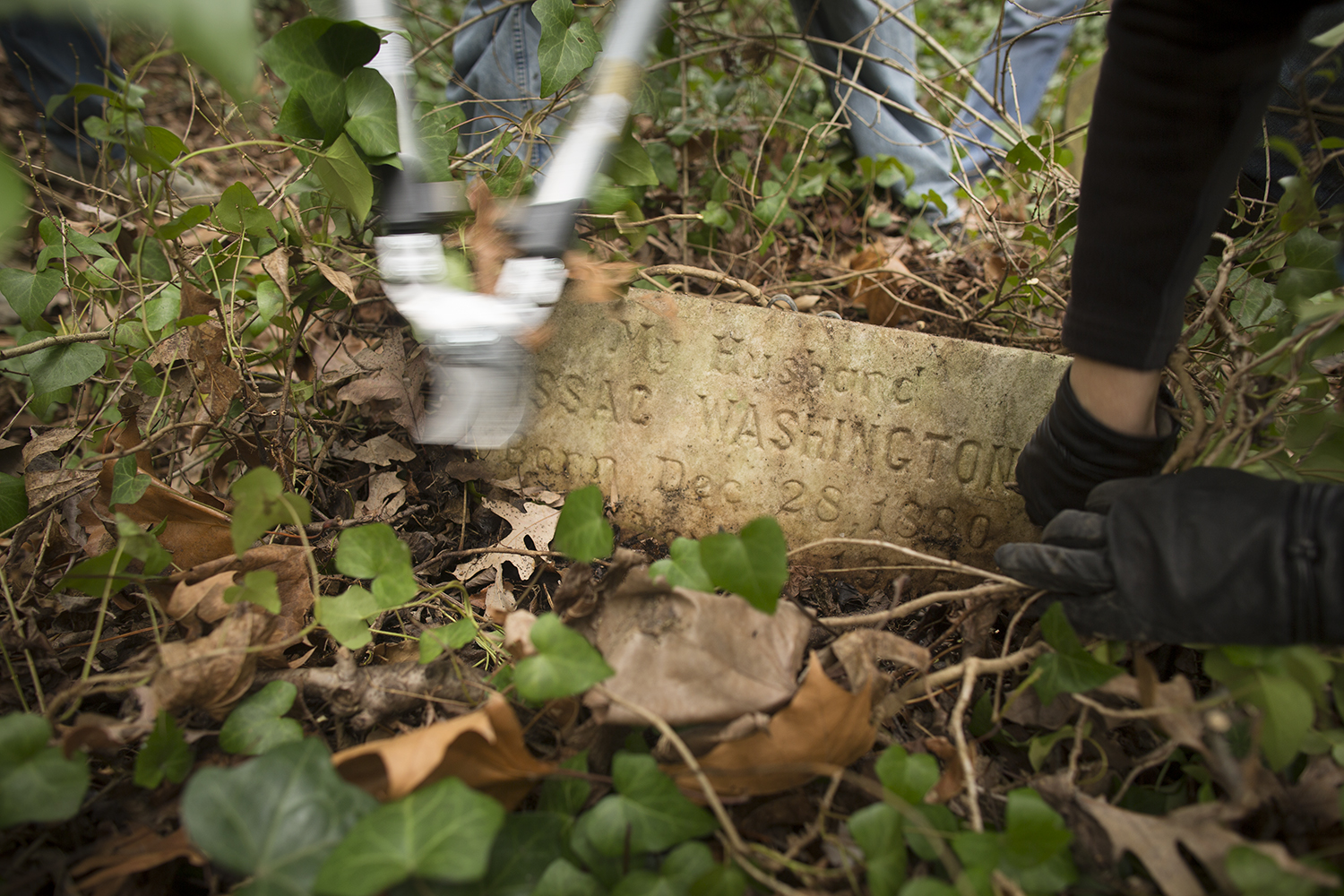
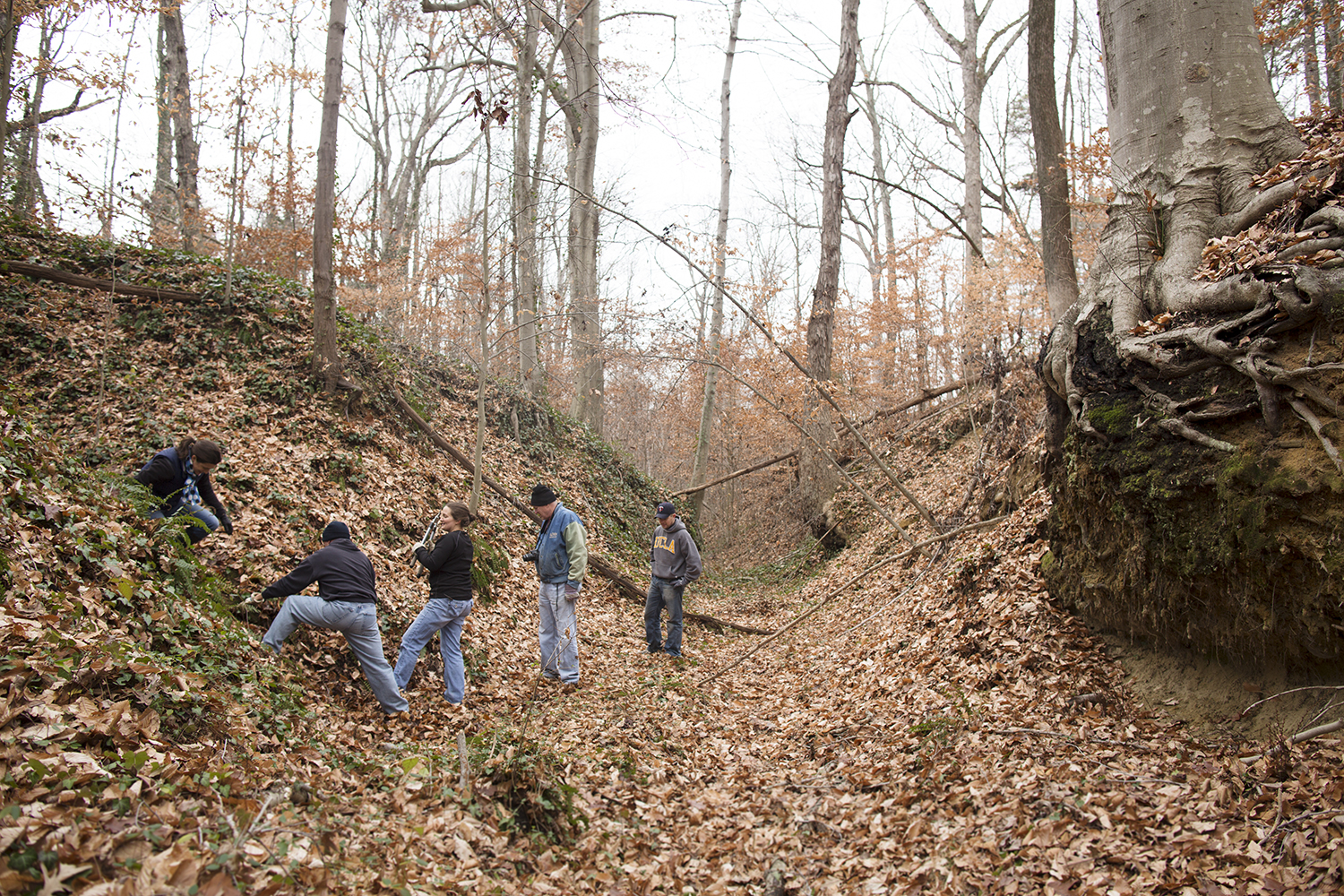

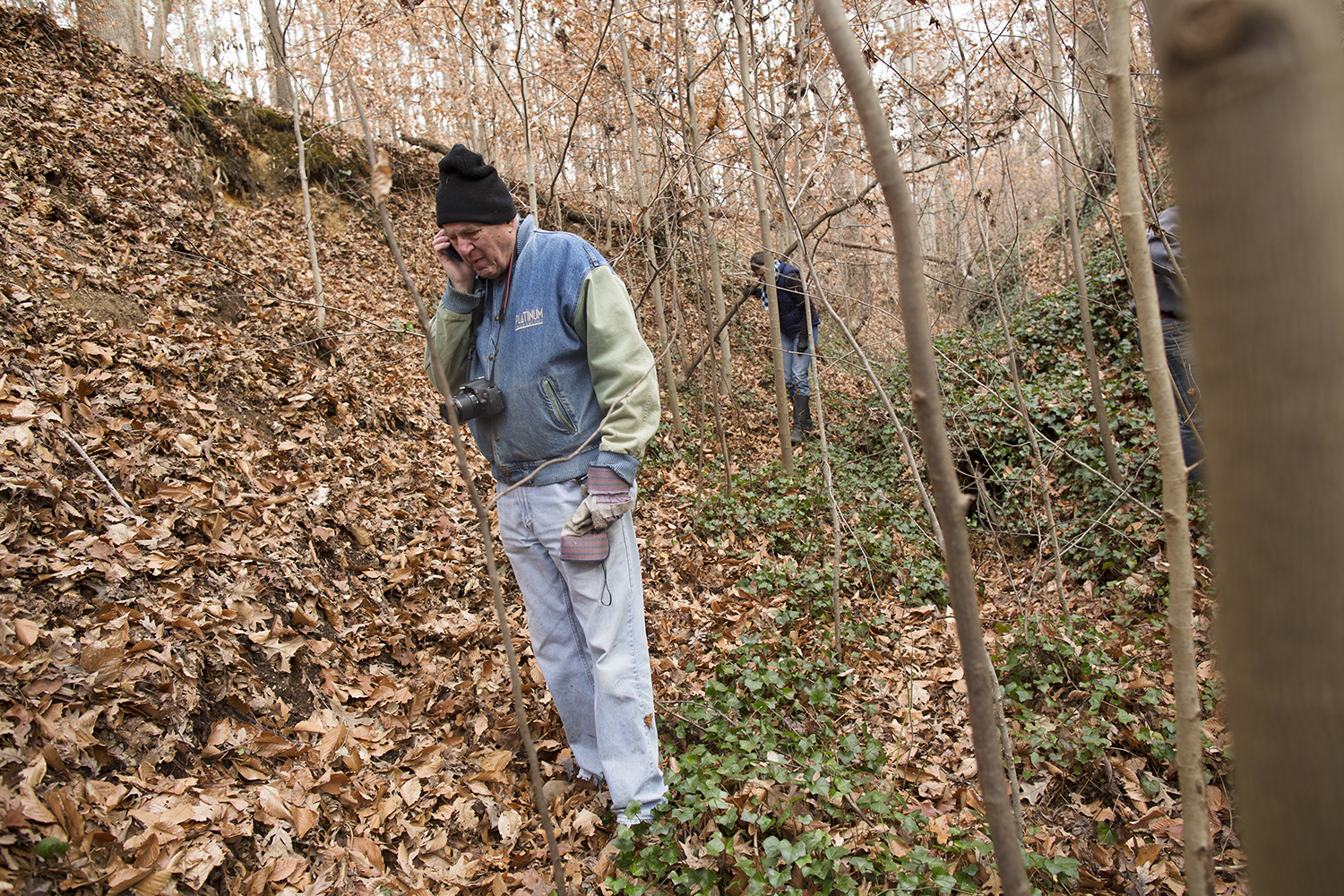
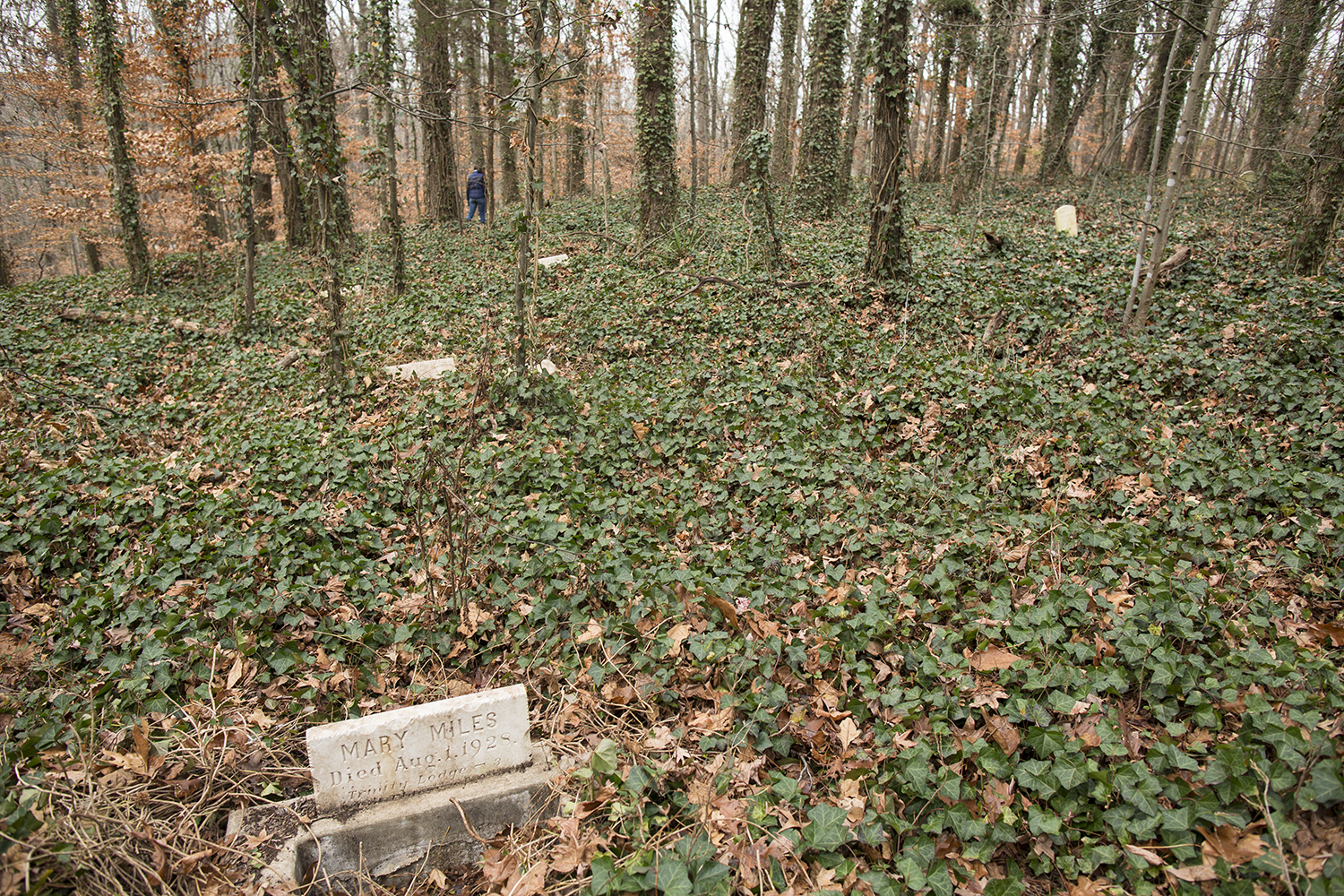

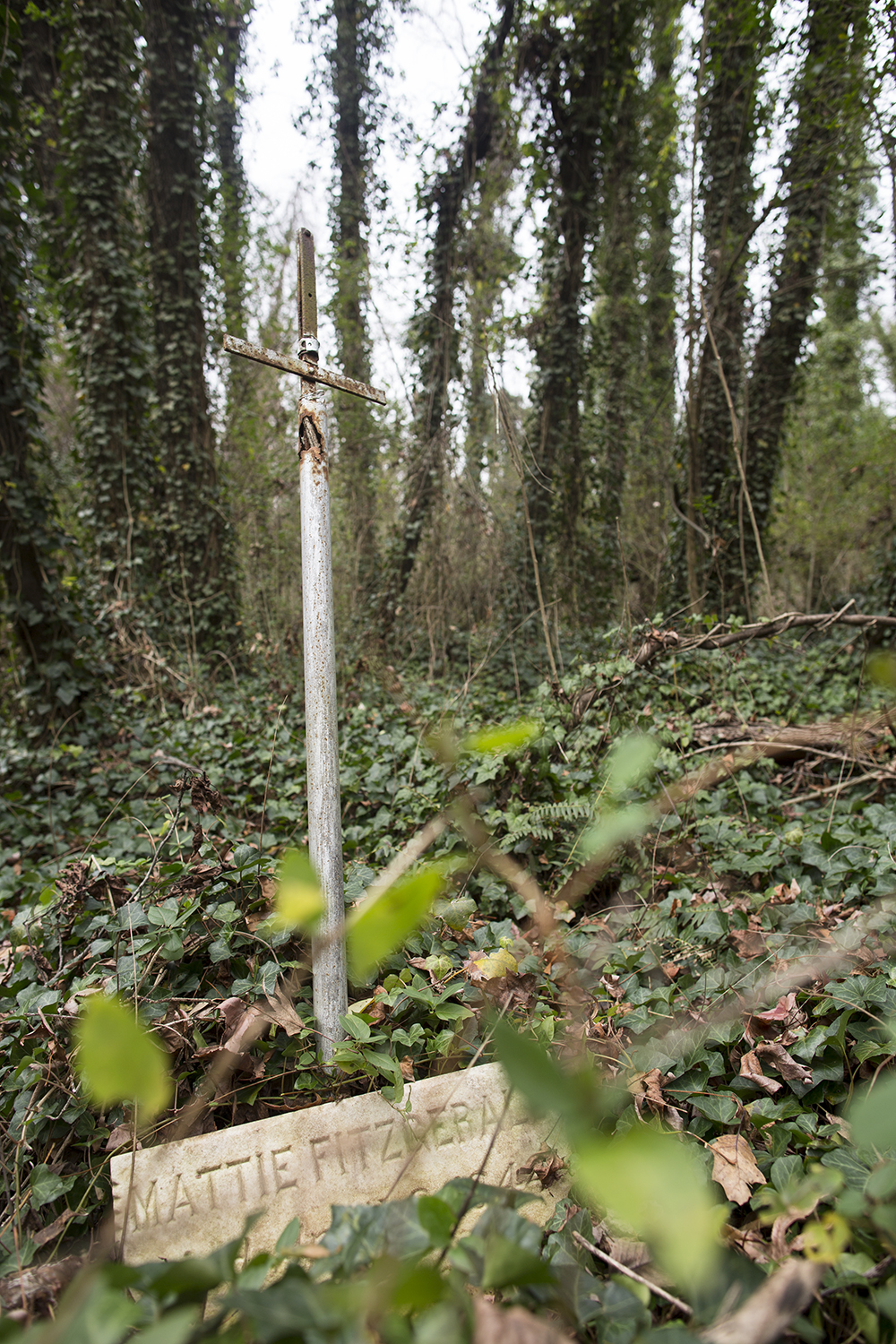
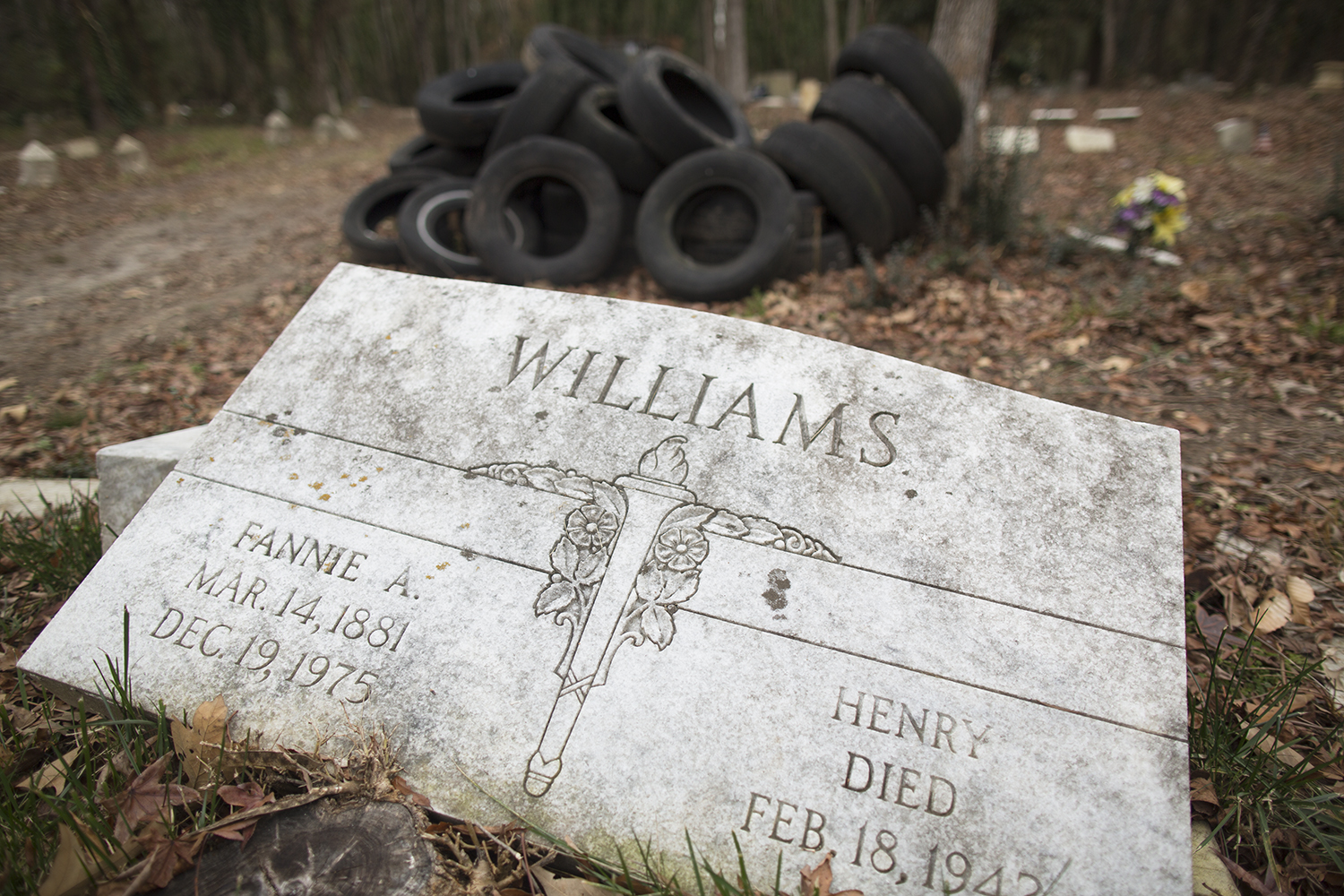
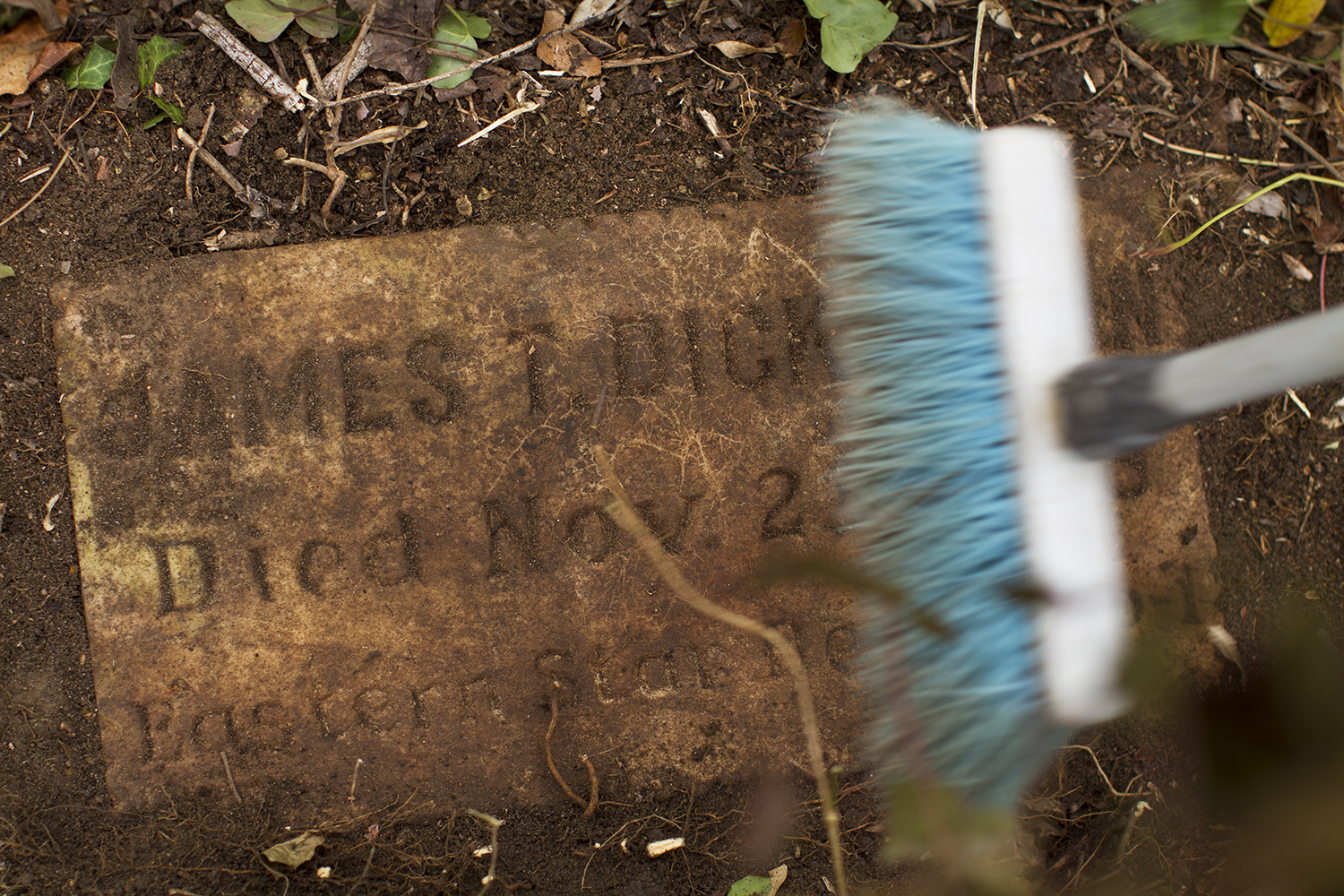
John Shuck, who coordinates cleanup days at East End, estimates that volunteers have beaten back the forest to expose 10 to 15 percent of this historic African American cemetery in the city of Richmond and Henrico County, Virginia. We had taken a break to explore the other 90 percent. Surreal, and heartbreaking, too.
Erin and I had joined a work day. That Saturday our group focused its efforts on a small patch of semicleared ground, maybe 25 feet by 25 feet. Four hours of ripping at vines, snipping branches, sawing limbs, and raking revealed the last corner of a burial plot belonging to the Dickerson family. I had been standing on Mr. James Dickerson’s grave marker, which lay less than an inch below ground, without knowing it as I fought with an especially tenacious root system. Erin saw the stone, and another volunteer swept off the dirt with a broom. This was a small accomplishment, but it felt significant because we, strangers from different backgrounds, had done it together as part of a larger project to reclaim a monument to African Americans in a city and region that seem more invested in remembering dead Confederates and their mythic cause than the rest of us.
We didn’t talk much as we labored last Saturday, a dreary, cold day. But a week before, more than a dozen Boy Scouts chattered the cemetery gloom away as they worked. Watching the boys tug and rake and laugh was nothing short of beautiful. Yes, they were earning credit for this service project. But all the kids we watched—we were videotaping the workday for our documentary, Make the Ground Talk—worked hard, and several understood the significance of their presence. “People whose graves are here, they’re probably happy right now,” a 14-year-old boy told us as he wrestled with an armload of vines. “I think it’s a good thing we’re doing,” another boy, wearing a purple and yellow windbreaker, said as he struggled to uproot the base of a decapitated sapling. “We’re finding people’s ancestors,” he said, thoughtfully. And they were.
We arrived early that Saturday, before the scouts or Shuck, and eased our Subaru toward a pack of vehicles parked at the gate between East End and Evergreen. Something wasn’t quite right. The half dozen or so men we saw were prepared for a different sort of work. They wore woodland camo and electric orange baseball caps. Some carried shotguns.
“Are you guys hunting here?” I asked the first man to look our way. In hindsight, it was a stupid question, given the men’s attire and accessories, but I was having a pinch-me moment. We weren’t in the boondocks, the sticks, or the hinterlands. Downtown Richmond is five miles away; our living room is nine.
The hunter was just as perplexed by us, a perky, multiracial trio of nonhunters. We explained why we there. He didn’t seem to know anything about any cemetery-cleaning day. The man, somewhere in his 30s or 40s, was cordial, and he spoke as if in apology, but with authority and entitlement. His hunt took precedence over anything we might be doing. He told us they’d hunt to the north first, on the East End side of the gate, where the scouts were scheduled to work at 10 a.m., then head south. “Y’all mind getting out of the middle of the road just for about 15, 20 minutes?” he asked me. “Go to the left of the trucks, if you don’t mind. I’m sorry, man.”
“Y’all are brave staying out here while we’re hunting,” another gun-toting man, older, bearded, and less nice, said to us. I wasn’t quite sure whether he was threatening us or simply stating a conviction, but it struck me as an odd comment from a man fixing to fire lethal rounds in cemeteries regularly visited by regular people—Evergreen is the final resting place of entrepreneur Maggie Walker and publisher John Mitchell, two prominent early-20th-century Richmonders.
Hunter #2 also told us that they had permission to hunt there. “There” must have been Evergreen, where we were having our chat, because Evergreen is privately owned. It’s conceivable that the owner, listed in Richmond records as the U.K. Corporation, had given someone the OK for their hunt. But Hunter #1 wasn’t in Evergreen. He was prowling East End, which has no owner, and so no one to grant (or deny) permission.
The scouts rolled right into this urban safari. Their adults would not let them leave the vans. Scoutmasters Alan Meekins and Erik Bodin huddled with Shuck, who told us that this was the first time he’d encountered guys with guns out here.
We were pretty sure we were on the Henrico County side of the border, so Meekins called the county’s police division.
“They claimed they had permission to hunt,” Meekins told the first officer to arrive. And then: Blam! A shotgun blast. Hell of a punctuation mark, one minute into the conversation.
“Interesting,” said the officer, a strapping, ebullient young man. “I’m kind of curious as to why people are hunting,” he told our group. “If they’re hunting actually the cemetery property,” the officer said, “I don’t see how they can actually do that.” We were wondering the same thing.
“The border is actually very, very weird here,” he said, “but we’ll figure out whose property they actually are on and find out . . . if they’re illegally hunting out there, because if they’re hunting a cemetery and it’s open to the public, I could imagine that that wouldn’t be allowed.”
I told the officer that the hunters said they had secured permission from the owners. “Regardless, I wouldn’t want to be visiting my loved one and have bullets go this way, that way, and the other or a headstone damaged by people hunting.”
He and a second officer told us they would let us know what they found out, and then they cruised down the road to meet the hunters. The scouts climbed out of the vans, grabbed tools—rakes and shears and buckets—and set to work. Erin joined the boys; Kiyo, our cinematographer, and I followed the officers down the road to the Evergreen gate.
The two officers spent a half hour or so with the hunters, and then they drove past us without stopping. The hunters followed a few minutes later, but a spotter from their party remained at the main entrance, shotgun leaning against the rear tire of his pickup. He was there after the scouts left, and after us.
I was fuming then, and I’m still upset.
I have no idea what transpired between the police officers and the hunters after the initial handshakes and how-y’all-doins. Officer #2 asked me to move down the road, back toward the scouts, and I complied, eventually, believing they would be speaking to us next.
I don’t know if the officers had valid reasons for not stopping. They may have been racing off to other radio calls—though the department’s incident report log for that day, December 13, doesn’t indicate this.
But there are things I do know: Men fired live rounds near a place were children had gathered, knowing that these children were gathering. I say knowing because I had told Hunter #1 this.
I know that a concerned adult, one legally responsible for these kids, called the police and asked that officers be dispatched to investigate men firing guns within county lines in a cemetery. And I do recall the officers saying they would return and tell us what happened. This would have been the professional and responsible—and right—thing to do.
The officers are white. The hunters are white. The scouts are black. One scoutmaster is white. John Shuck, volunteer Melissa, and Erin are white. Kiyo is Japanese. I am black. I name race here because race matters. In this situation, I cannot say whether race was a substantive or perceptual factor, but it figured in. People might avoid it, others will deny its salience, but race matters in this country. To pretend otherwise in post-Ferguson America bespeaks ignorance or disingenuousness.
We may very well have been protected by the officers. None of the scouts was injured, though we don’t know if they were ever in danger. Erin, Kiyo, and I may have been, along with anyone else visiting graves or bird-watching, like the woman I talked to who turned her car around after she saw the guys with guns.
I called the Henrico Police Division. The representative I spoke to could find no record of an incident report or even a call for service. An agent in communications found the call, but said that “no report was actually taken for the incident.” She offered to leave my contact information for the officers. —BP
